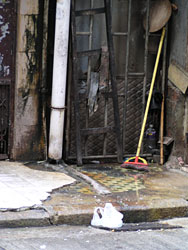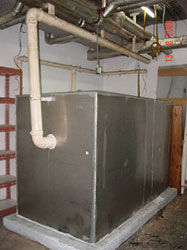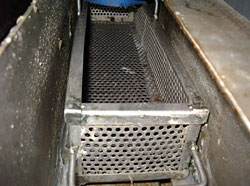|
Water
|
|||||||||||||||||||||||||||
|---|---|---|---|---|---|---|---|---|---|---|---|---|---|---|---|---|---|---|---|---|---|---|---|---|---|---|---|
|
|
|||||||||||||||||||||||||||
| Activities | |||||||||||||||||||||||||||
| Problem |
Wastewater illegally discharged via stormwater drain or stormwater surface channel
|
||||||||||||||||||||||||||
| Relevant Env. Control | Under the Water Pollution Control Ordinance, Cap. 358, discharge of polluted waters into stormwater drains is not permitted, discharging wastewater from all types of industrial, manufacturing, commercial, institutional and construction activities into sewers or elsewhere should comply with the terms and conditions of a licence issued by the EPD. | ||||||||||||||||||||||||||
| Practical Solutions |
|
||||||||||||||||||||||||||
| Activities | |||||||||||||||||||||||||||
| Problem |
Blockage of foul drain and overflow of grease trap
|
||||||||||||||||||||||||||
| Relevant Env. Control | Under the Water Pollution Control Ordinance, Cap. 358, discharge of polluted waters into stormwater drains is not permitted, discharging wastewater from all types of industrial, manufacturing, commercial, institutional and construction activities into sewers or elsewhere should comply with the terms and conditions of a licence issued by the EPD. | ||||||||||||||||||||||||||
| Practical Solutions |
|
||||||||||||||||||||||||||
| Activities | |||||||||||||||||||||||||||
| Problem |
Discharge exceed the WPCO license limit
|
||||||||||||||||||||||||||
| Relevant Env. Control | Under the Water Pollution Control Ordinance, Cap. 358 , discharge of polluted waters into stormwater drains is not permitted, discharging wastewater from all types of industrial, manufacturing, commercial, institutional and construction activities into sewers or elsewhere should comply with the terms and conditions of a licence issued by the EPD. | ||||||||||||||||||||||||||
| Practical Solutions |
|
||||||||||||||||||||||||||



